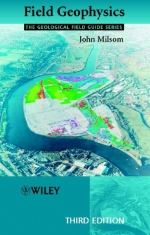Добрый день, Коллеги. Важное сообщение, просьба принять участие. Музей Ферсмана ищет помощь для реставрационных работ в помещении. Подробности по ссылке
Field geophysics / Полевая геофизика
Although there are many different geophysical methods, small-scale surveys all tend to be rather alike and involve similar, and sometimes ambiguous, jargon. For example, the word base has three different common meanings, and stacked and field have two each.
Measurements in geophysical surveys are made in the field but, unfortunately, many are also of fields. Field theory is fundamental to gravity, magnetic and electromagnetic work, and even particle fluxes and seismic wavefronts can be described in terms of radiation fields. Sometimes ambiguity is unimportant, and sometimes both meanings are appropriate (and intended), but there are occasions when it is necessary to make clear distinctions.
In particular, the term field reading is almost always used to identify readings made in the field, i.e. not at a base station. The fields used in geophysical surveys may be natural ones (e.g. the Earth’s magnetic or gravity fields) but may be created artificially, as when alternating currents are used to generate electromagnetic fields. This leads to the broad classification of geophysical methods into passive and active types, respectively.
Physical fields can be illustrated by lines of force that show the field direction at any point. Intensity can also be indicated, by using more closely spaced lines for strong fields, but it is difficult to do this quantitatively where three-dimensional situations are being illustrated on two-dimensional media. <...>




